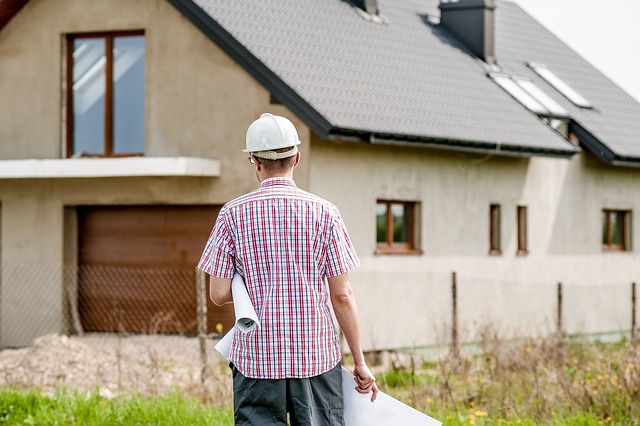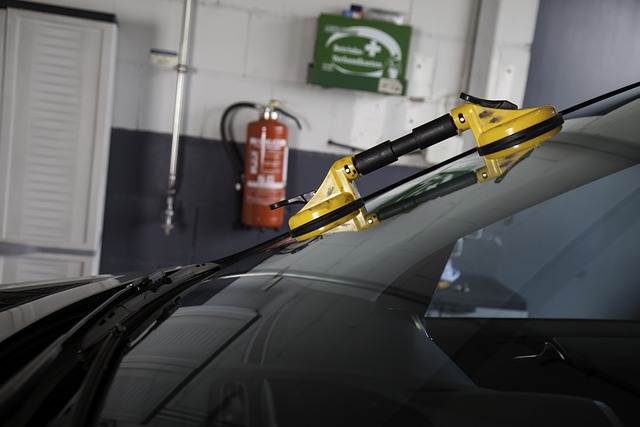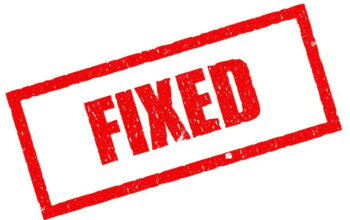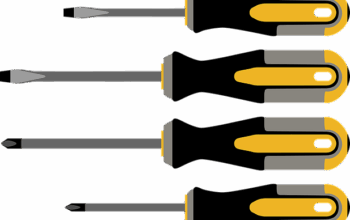Home Repair and Maintenance play a critical role in ensuring your home remains functional and safe. DIY mishaps like leaky faucets, sticking doors, and electrical issues should be promptly addressed to prevent more significant problems. A handyman's expertise is vital for resolving these, as seen with dripping faucets that can lead to water waste and mold if not fixed. Simple solutions like washer replacements or O-ring repairs can restore functionality without the need for extensive professional intervention. Electrical repairs are particularly important due to safety concerns, necessitating a handyman's knowledge for safe switch, outlet, or lighting fixture fixes. Additionally, painting errors often stem from improper surface preparation or applying paint too soon, which can be avoided with professional guidance. Flooring and tiling issues should also be addressed by a handyman to prevent future problems like gaps or lifting tiles. A well-rounded toolkit is essential for any home repair endeavor, including fundamental hand tools, power tools, safety gear, measuring instruments, and electrical equipment like a multimeter. For basic electrical tasks, one can refer to detailed guides, but more complex issues should be handled by a qualified electrician due to the high risk of fire or further damage. Plumbing repairs are another area where knowledge and caution are key; many common plumbing problems can be resolved with the right approach and tools, but always ensure the water supply is turned off before beginning any repair to avoid accidental flooding. Regular maintenance checks help prevent small issues from becoming major emergencies, ensuring your home remains in top shape through consistent Home Repair and Maintenance practices.
When tackling home repair projects, DIY endeavors can sometimes lead to mishaps. This article navigates common pitfalls in DIY home repairs and offers practical handyman solutions to ensure your home remains safe and well-maintained. From identifying and rectifying frequent faux pas to understanding the handyman’s essential toolkit, readers will gain insights into effective repairs. Additionally, discerning when electrical problems require professional intervention is crucial, as is mastering plumbing issues through a step-by-step guide tailored for homeowners. Home repair and maintenance are key to maintaining a comfortable living space, and this article serves as a comprehensive resource for achieving just that.
- Identifying Common DIY Home Repair Mishaps and Their Handyman Solutions
- The Handyman's Toolkit: Essential Equipment for Effective Repairs
- Navigating Electrical Issues: When to DIY and When to Call a Professional
- Mastering Plumbing Problems: Step-by-Step Guide for Homeowners
Identifying Common DIY Home Repair Mishaps and Their Handyman Solutions

When embarking on DIY home repair projects, even the most diligent homeowners can encounter mishaps. Common issues such as leaky faucets, sticking doors, or electrical troubles often arise from well-intentioned but misguided efforts. Identifying these problems early is crucial for preventing further damage; for instance, a dripping faucet may seem minor but can lead to significant water waste and potential mold growth if left unchecked. Handyman solutions for such issues are straightforward and effective, often involving replacing washers in faucets or repairing O-rings on doors. For electrical problems, it’s imperative to address the issue promptly to maintain safety and functionality within your home. A handyman skilled in electrical work can safely replace switches, outlets, or lighting fixtures, ensuring your home’s electrical systems operate correctly and efficiently.
In addition to these, painting blunders are a frequent DIY hiccup. Overlooking proper surface preparation or applying multiple coats before the previous one has dried can lead to an unsightly finish. A handyman can rectify this by properly preparing the area, sanding down any rough spots, and applying fresh coats of paint for a seamless, professional-grade finish. Similarly, improperly installed flooring or tile can lead to gaps, uneven surfaces, or tiles popping up over time. Handyman services can correct these issues by removing and reinstalling the affected materials, ensuring a smooth, level surface that enhances both the appearance and longevity of your floors. Home repair and maintenance are ongoing processes, and with a handyman’s expertise, you can confidently tackle and resolve these common DIY failures, maintaining a well-kept and functional home environment.
The Handyman's Toolkit: Essential Equipment for Effective Repairs

When tackling home repair and maintenance tasks, having the right tools at your disposal can make all the difference between a job done efficiently and one that may require professional revisions. A handyman’s toolkit is not just a collection of items; it’s a carefully curated set of equipment designed to handle a wide range of home repair challenges. At the core of any effective toolkit are the basics: a reliable set of screwdrivers, pliers, wrenches, and hammers in various sizes. These time-honored staples are indispensable for tightening loose screws, bending pipes, loosening stubborn bolts, and driving nails with precision. For more complex tasks, power tools like drills, saws, and sanders become essential, allowing for faster and more precise work. A cordless drill/driver is particularly versatile, capable of handling everything from drilling pilot holes to driving screws into place. Circular saws and reciprocating saws enable cutting through materials such as wood, drywall, and even metal with ease, while sanders can smooth rough edges and prepare surfaces for painting or finishing.
In addition to these, safety equipment is paramount in any handyman’s toolkit. Safety glasses, gloves, ear protection, and dust masks are not just optional accessories; they are critical for protecting yourself from potential harm. A measuring tape and a level are indispensable for ensuring accuracy in measurements and installations, while a set of combination squares will help you verify angles and lengths with precision. For electrical repairs, a multimeter can be an invaluable tool for troubleshooting circuits and detecting faults. Lastly, never underestimate the utility of a step ladder or a set of step stools; they provide access to areas that are otherwise out of reach, making it easier to complete those high-up repairs with safety and confidence. With a well-equipped toolkit tailored for home repair and maintenance, DIY projects can be approached with the assurance that most challenges can be met head-on.
Navigating Electrical Issues: When to DIY and When to Call a Professional

When confronted with electrical issues at home, discerning whether to attempt a repair yourself or to call in a professional is crucial for your safety and the integrity of your home’s systems. Simple tasks such as replacing a light switch or installing new receptacles are within the scope of home repair and maintenance skills for those comfortable with basic electrical work. These DIY endeavors can often be executed safely with a step-by-step guide and the right tools on hand. However, when dealing with more complex issues like tripped circuits, flickering lights, or recurring power outages within your home, it’s wise to err on the side of caution. These problems may indicate larger wiring faults that require a licensed electrician’s expertise to address. Attempting to fix such issues without proper knowledge can lead to dangerous situations, including electrical fires or further damage to your home’s electrical system. Always prioritize safety and consider the long-term implications of any repair; professional intervention is often the best course for complex electrical repairs and maintenance to ensure the continued safety and functionality of your home’s electrical infrastructure.
Mastering Plumbing Problems: Step-by-Step Guide for Homeowners

When faced with plumbing issues at home, a systematic approach can often resolve the problem without the need for professional intervention. Home Repair and Maintenance are integral to ensuring that your household’s pipes and fixtures function optimally. A leaky faucet or a clogged toilet may seem trivial at first, but neglecting these can lead to more significant complications. To address common plumbing problems, start by identifying the issue. For instance, if you notice water dripping from a faucet handle, it’s likely a washer that needs replacement—a simple fix for those comfortable with basic tools. On the other hand, if your sink won’t drain, the blockage might be further down in the pipes. In such cases, using a plumber’s snake or a plunger can often dislodge the clog. It’s essential to proceed cautiously, as aggressive action can cause damage. For more complex issues like a running toilet or a mysterious water leak behind walls, understanding the components of your toilet tank and knowing how to isolate water supply lines will be crucial. Always remember to shut off the water before starting any repair to prevent flooding. With these steps, you can tackle many plumbing repairs with confidence, contributing to effective Home Repair and Maintenance practices. Regular upkeep, such as inspecting seals and cleaning out traps, can prevent minor issues from escalating into major emergencies.
Homeowners who have encountered DIY mishaps can attest to the value of understanding home repair and maintenance. This article has outlined common issues, such as plumbing leaks and electrical glitches, and provided practical handyman solutions to address these problems effectively. Armed with knowledge of the essential tools in a handyman’s kit, readers are now equipped to tackle a variety of home repairs confidently. Remember, when dealing with complex or potentially hazardous issues like major electrical work, it’s wise to leave the task to the professionals. In conclusion, whether you’re faced with a leaky faucet or a faulty outlet, with the right approach and tools, home repair and maintenance can be managed with greater ease, ensuring your living space remains safe and functional.



